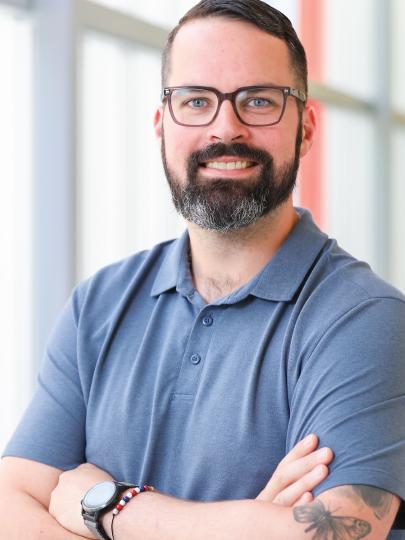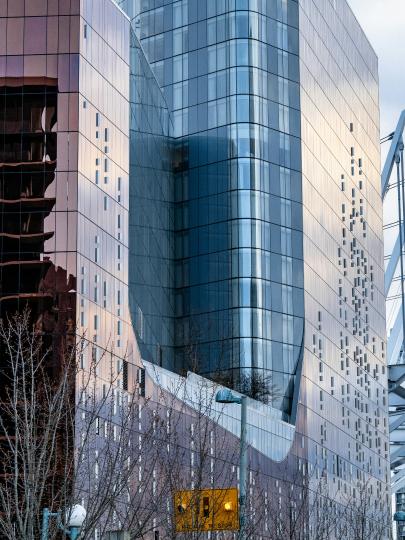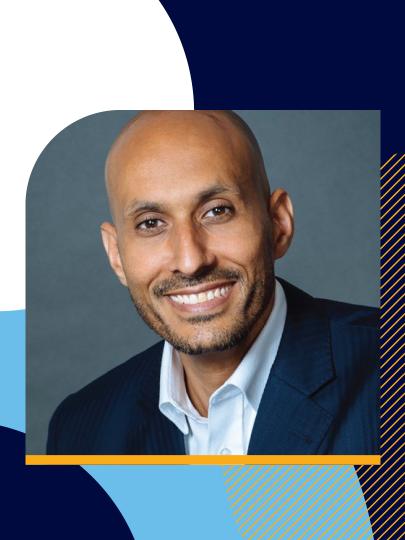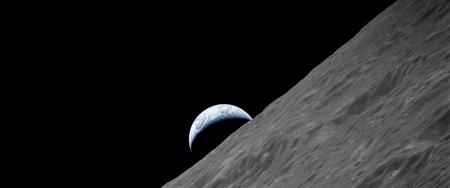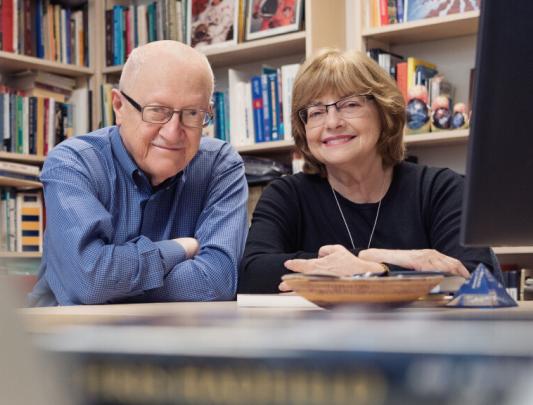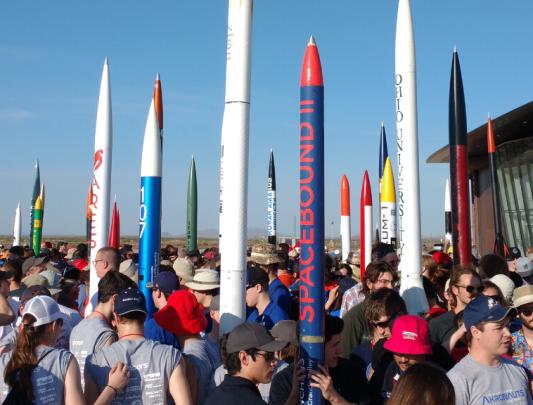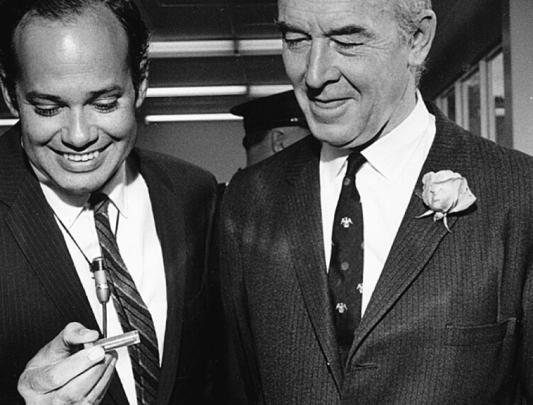Regulating the Final Frontier
There is something about space that brings out the giddy enthusiast in even the most serious academic.
That thought occurs while sitting in the Robert H. Lee Alumni Centre with Dr. Aaron Boley, Canada Research Chair in Planetary Astronomy and co‑founder of the new UBC Outer Space Institute. Boley is equal parts earnest and excitable; he’s a space geek who skipped over the Star Trek fantasy conventions in favour of completing a PhD in Astrophysics (University of Indiana, 2007) and two post‑doctoral fellowships, one at the Institute of Theoretical Physics at the University of Zurich and the second as the Sagan Postdoctoral Fellow at the University of Florida. His has been a serious path.
Yet, in talking about creating an interdisciplinary space institute at UBC, everything Boley says sounds like the breathless plotline of a Hollywood movie, from space mining adventures a la Avatar to orbital catastrophes such as Gravity. Except in Boley’s version, there is always a happy ending – not just one where the good guys win, but an even cheerier narrative in which the plot‑driving conflicts never even happen. If Boley gets his way – which is to say, if the UBC Outer Space Institute achieves its potential – the good guys will always get there first, anticipating problems, mediating disagreements and establishing a rules‑based regime that allows humankind to apply in space the lessons learned from every colonial calamity that has ever occurred on Earth.
If that sounds naïve – even hopelessly optimistic – you’d best not say so to Boley’s Outer Space Institute co‑founder, Dr. Michael Byers, Canada Research Chair in Global Politics and International Law. Byers doesn’t just think Boley is right; he has evidence and argument on his side. Despite the messy state of planetary politics – our failure to deal collectively with global issues like climate change or species extinction – Byers says: “Countries collaborate in cold, dark, dangerous places.” He learned as much working in the Arctic on everything from international agreements on resource development to search‑and‑rescue protocols. In remote, unforgiving locations, Byers says, “We become more aware of our common humanity.”
In remote, unforgiving locations, Byers says, “We become more aware of our common humanity.”
Still, it’s best not to leave these things to chance. So, Byers and Boley have gathered scientists and social scientists in almost every imaginable discipline to join an Outer Space Institute. From UBC, there are physicists and astronomers, political scientists and lawyers, medical doctors and sociologists. Outside experts include people such as Paul Meyer from Simon Fraser University, a former Canadian ambassador for disarmament; David Kendall, the retired former chair of the United Nations Committee on the Peaceful Uses of Outer Space; and Tanya Harrison, director of Research at the Arizona State University NewSpace initiative. There’s even private‑sector participation, such as with Brian Israel, a former US State Department legal advisor who is now with Planetary Resources, Inc.
Per the earlier Hollywood references, the first two research themes are space mining and space debris, which cover both the most promising opportunity and the most immediate threat.
Threat first: since the Russians orbited Sputnik I in 1957, humans have launched more than 5,000 satellites into space. These objects stayed; wavered; wandered off into a higher “graveyard orbit”; re‑entered Earth’s atmosphere and burned up; or broke up and scattered, creating a near‑Earth‑orbit debris field that now contains 20,000 pieces of space junk that are large enough to track, roughly 10 centimetres in diameter and up. But there are more than 500,000 pieces if you count everything bigger than one centimetre. And, as Boley explains, those little pieces do count. Bigger pieces will do more damage, but a piece of space junk that’s big enough to track is also obvious enough to avoid; the US military issues an average of 21 warnings a day of potential debris collisions, so satellite owners can adjust their track. But the little pieces are much more plentiful, and coming at you at 58,000 kilometres an hour, even a one‑centimetre chunk can tear a dangerous, perhaps catastrophic, hole in a piece of space infrastructure.
If Boley gets his way – which is to say, if the UBC Outer Space Institute achieves its potential – the good guys will always get there first, anticipating problems, mediating disagreements and establishing a rules‑based regime that allows humankind to apply in space the lessons learned from every colonial calamity that has ever occurred on Earth.
We’ve known about this for a long time. The US conducted the high‑altitude Starfish Prime nuclear test in 1962 and the resulting detritus knocked out as many as 10 early‑generation satellites. It was partly on that basis that the US, Russia and the UK signed the first Outer Space Treaty in 1967, promising no weapons of mass destruction in space and prohibiting any nation from claiming sovereignty over a celestial body. If anyone needed a reminder of the danger of banging around in the heavens, China conducted what Boley describes as a “very successful” anti‑satellite missile test in 2007, creating more space debris than any previous event in history. In accurately deploying a “kill vehicle,” the Chinese blew one of their own weather satellites into 2,000 pieces, golf ball size or larger.
The danger here is that debris begets more debris as pieces smash about, breaking up other satellites. This threatens a cascade of damage that could cripple our ability to operate in the critical near‑Earth orbit, where thousands of satellites now provide a huge range of services, including: weather forecasting, global positioning systems, aircraft and ship communications, financial services, agriculture, forestry, fishery and climate change science and research, search and rescue, and disaster relief. If a near‑Earth orbit debris field really got out of control, it could compromise our ability to send anything into space, creating a kill zone that would keep us locked on our own planet – or forcing us to completely redesign every space vehicle and satellite.
The second issue, space mining, is similarly critical and, in some regards, carries similar risks. Extra‑planetary resource development is no longer a distant theoretical possibility. Even today, the Japanese space agency (JAXA) is stalking the asteroid Ryugu with a craft called Hyabusa2, looking for a safe place to set down so it can dig into the asteroid and bring samples back home.
If a near‑Earth orbit debris field really got out of control, it could compromise our ability to send anything into space, creating a kill zone that would keep us locked on our own planet – or forcing us to completely redesign every space vehicle and satellite.
The promise here is enormous, especially for space exploration and development. Asteroids are a likely source for water, fuel and other resources that could be crucial to support extra‑planetary missions; it would be much easier to harvest those materials in space than to try to blast them in sufficient quantity off the gravitationally stubborn planet Earth. Commercial enterprises are also working to take advantage of these new opportunities. For example, the American company Planetary Resources, Inc. has attracted investment from the likes of Google executives Larry Page and Eric Schmidt, Ross Perot, Jr., and (perversely, given the dour image of mining that he offered in Avatar), Hollywood producer and director, James Cameron. The US also passed a Commercial Space Launch Competitiveness Act in 2015, making it legal to “own” anything that you bring back from space, even if the Outer Space Act prohibits you from claiming ownership of the body from which you harvested the bounty.
This becomes increasingly complicated. If you mine a small asteroid, for water or precious metals, you could consume it or destroy it. Given their relatively small size, asteroids have a limited gravitational pull, so if you start scraping about, it would be difficult to contain the dust and rocks that might drift off into space – again creating a potentially dangerous debris field. As Earthlings begin to grapple seriously with these issues, Boley also wonders whether we should be thinking of preserving some asteroids for scientific or even aesthetic purposes. As the solar system’s last supply of unprocessed inorganic and organic materials, asteroids may hold invaluable secrets to such things as the origin of planets, he says. Some may also prove to be inherently precious or beautiful. And space tourism is also a promising area; we don’t want to wreck the seven wonders of the near‑Earth world before people have a chance to enjoy them and learn from them.
It’s for these and many other reasons that Boley has become a policy guy, adding the creation of an Outer Space Institute to his astrophysical research to‑do list. “I’m a scientist, but the policy questions just leap out,” he says.
And Byers says Boley is “an invaluable collaborator,” adding, “I can’t work on law and policy without some understanding of the astrophysics.”
UBC, they argue, is also the natural place for an institute of this type. Canada is one of the world’s most important space powers, on the strength of extra‑terrestrial expertise that can be traced directly to UBC talent, including John MacDonald and Vern Dettwiler, who founded MacDonald Dettwiler and Associates, the company that is famous, among other things, for building the RadarSat satellites and the Canadarm.
Byers and Boley also return to their optimistic view that the world is ready to cooperate in space if only someone shows leadership. “It’s just a question of how we get nations to play well together,” Boley says, adding that, “Really, it’s already working. Even at the height of the Crimean conflict in 2014, Americans continued to fly back and forth to the International Space Station aboard Russian Soyuz rockets.”
Space, it seems, is not just the final frontier: the infinite place may also the place of infinite possibility.
Read more about the institute here: www.OuterSpaceInstitute.ca


